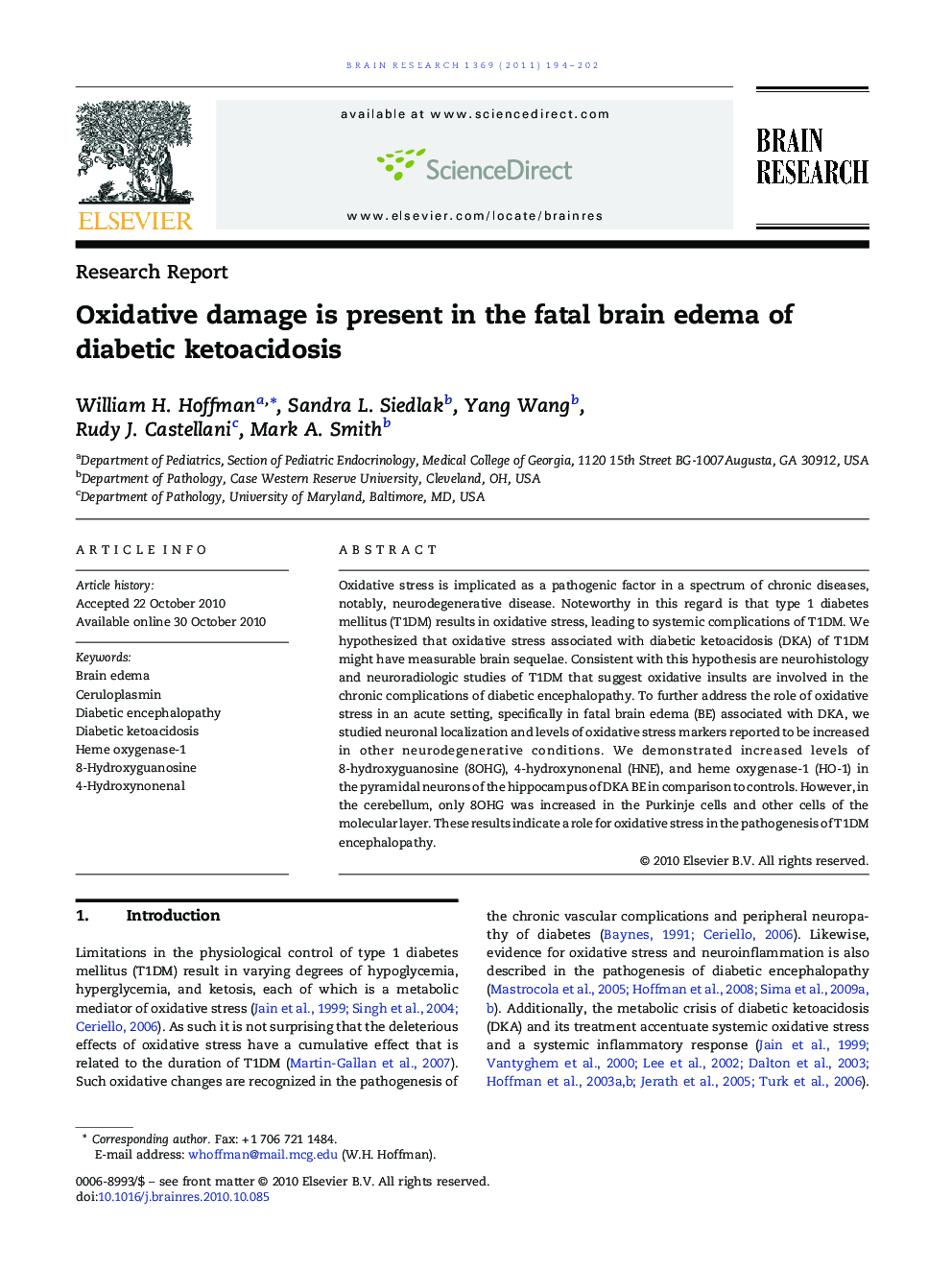| Article ID | Journal | Published Year | Pages | File Type |
|---|---|---|---|---|
| 6265396 | Brain Research | 2011 | 9 Pages |
Oxidative stress is implicated as a pathogenic factor in a spectrum of chronic diseases, notably, neurodegenerative disease. Noteworthy in this regard is that type 1 diabetes mellitus (T1DM) results in oxidative stress, leading to systemic complications of T1DM. We hypothesized that oxidative stress associated with diabetic ketoacidosis (DKA) of T1DM might have measurable brain sequelae. Consistent with this hypothesis are neurohistology and neuroradiologic studies of T1DM that suggest oxidative insults are involved in the chronic complications of diabetic encephalopathy. To further address the role of oxidative stress in an acute setting, specifically in fatal brain edema (BE) associated with DKA, we studied neuronal localization and levels of oxidative stress markers reported to be increased in other neurodegenerative conditions. We demonstrated increased levels of 8-hydroxyguanosine (8OHG), 4-hydroxynonenal (HNE), and heme oxygenase-1 (HO-1) in the pyramidal neurons of the hippocampus of DKA BE in comparison to controls. However, in the cerebellum, only 8OHG was increased in the Purkinje cells and other cells of the molecular layer. These results indicate a role for oxidative stress in the pathogenesis of T1DM encephalopathy.
Research Highlights⺠The markers of oxidative stress present in several neurodegenerative diseases are identified in the brains of young patients with poorly controlled T1DM and the fatal brain edema of diabetic ketoacidosis. ⺠The previously reported pattern of selective neuronal vulnerability and neuronal deficit are extended suggesting the early onset of diabetic encephalopathy in poorly controlled T1DM. ⺠The phenotype of the markers of oxidative stress suggests that the mechanism of oxidative damage differs from that found in Alzheimer's disease.
